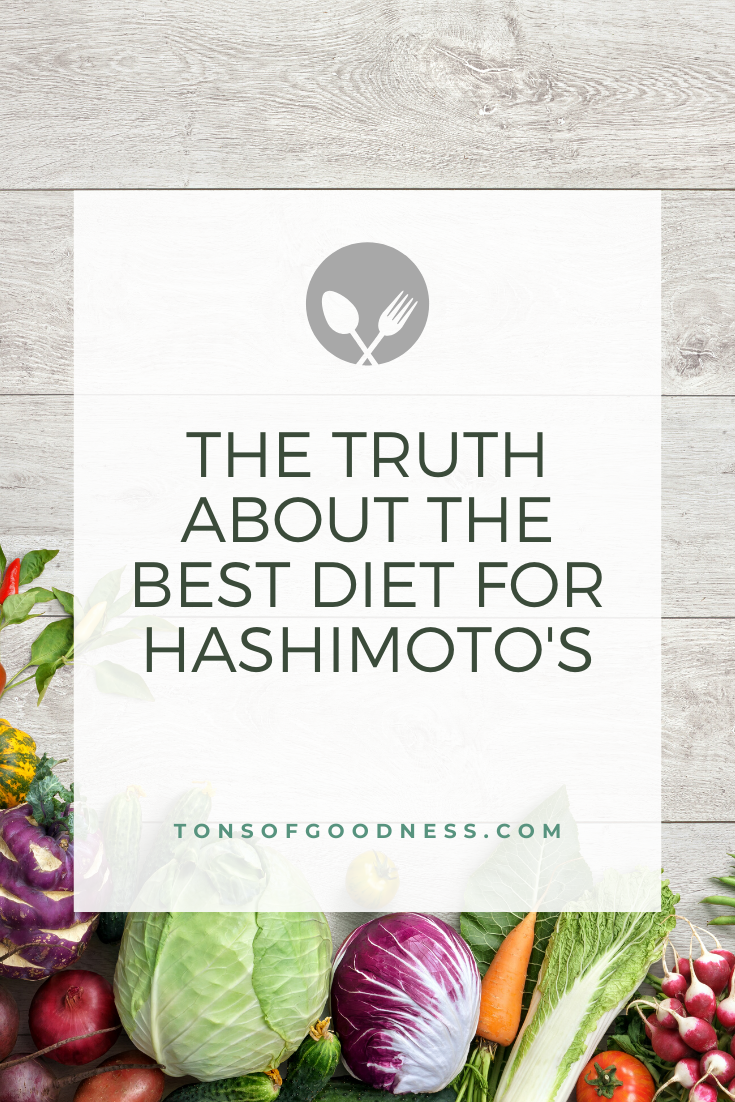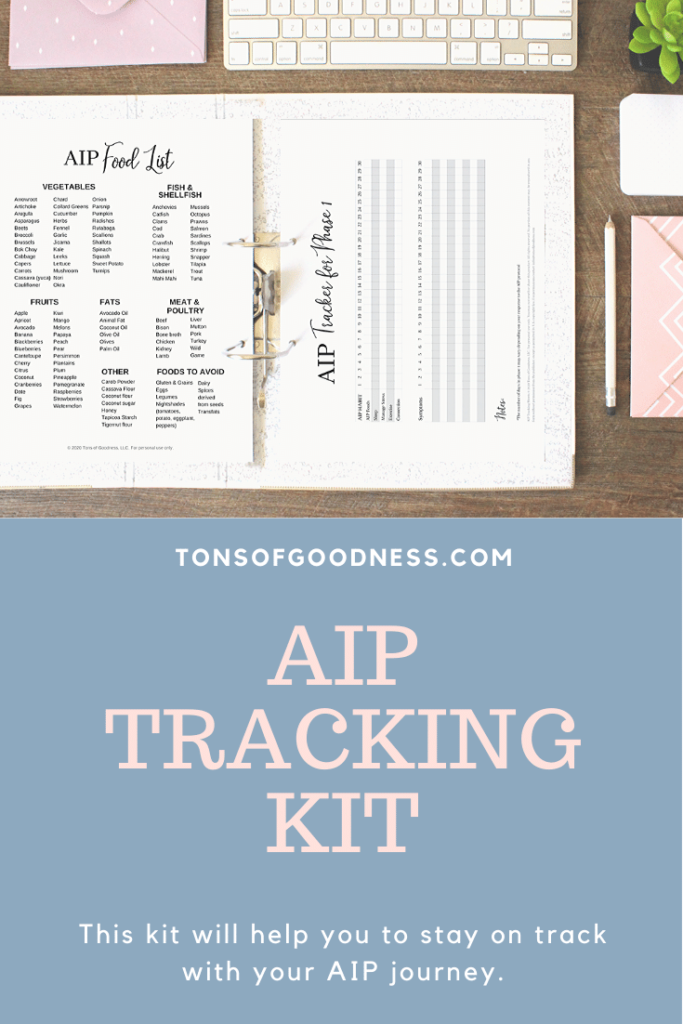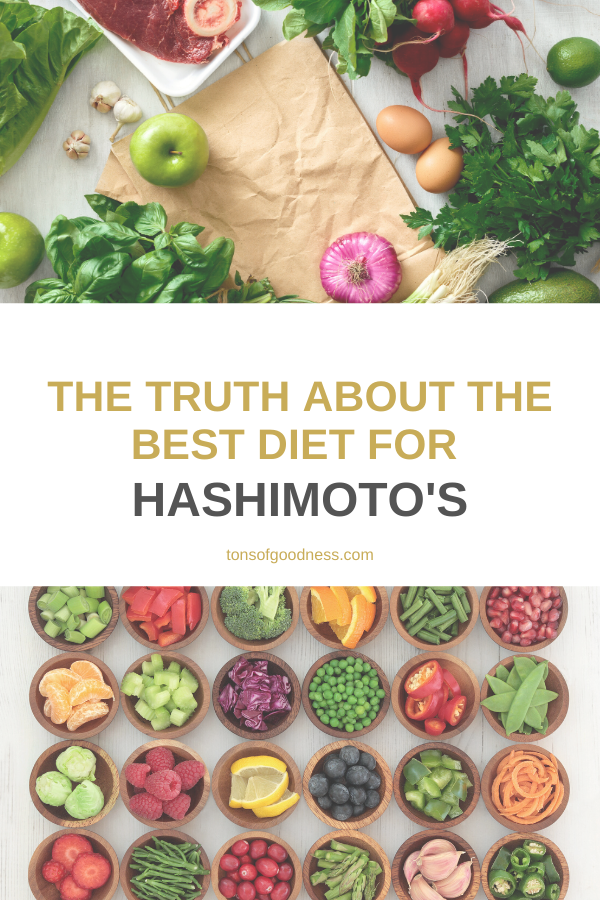

Disclosure: Some of the links in this article are affiliate links, which means that if you purchase through those links I will receive a small commission. For example, as Amazon Associate, I earn from qualifying purchases. If you decide to use these links, thank you!
Struggling with symptoms of this autoimmune condition? Try this diet for Hashimoto’s to calm inflammation and start feeling better.
So, you may be thinking, what the heck, Kat? You just wrote about intuitive eating and now you’re on a DIET? Yes, I know, but it’s not what you think.
As you may have read in my previous post, I was diagnosed with Hashimoto’s Thyroiditis in October of 2015. This is an autoimmune disorder that affects the thyroid. And food sensitivities are a big trigger of symptoms. So, while I am trying my best to follow intuitive eating principles, I also have to be aware of how food affects my condition and my body.
The diet for Hashimoto’s that I will explain is a diet that will help uncover reactive foods and sensitivities. The purpose is to decrease or eliminate symptoms of Hashimoto’s like pain, fatigue, gut symptoms, skin reactions, etc. For a full list of symptoms, click here.
I have to admit that I am having somewhat of a difficult time with starting a diet, even if it is for my health. It helps me to remember that I am choosing to do this to learn what foods help me to feel good. This is not about restricting the amount of food that will eat. It is also not about weight loss.
The difference is found in our FEELINGS – in force, restriction, emotions, and deprivation AS OPPOSED TO love, freedom, and choice.
Kelly, Founder of The Wellness Boulevard
The diet that most physicians and nutritionists recommended is an elimination diet. Hate the way this sounds? Me too. But, it makes sense once you learn more about it.
During an elimination diet, you stop eating the most common problematic foods and any foods that you believe you may be sensitive to. Then you add the foods back in, one at a time, while monitoring your reactions and symptoms. This will help you to create a diet that is best for you.
An elimination diet will help you to figure out your individual food triggers so that you can avoid these foods and start feeling better.

Food sensitivities cause inflammation and cause your immune system to attack your thyroid gland. When this happens you experience symptoms and your thyroid levels can be impacted. By eliminating food sensitivities, you will let your system rest and your gut heal.
Addressing these issues with diet can improve your Hashimoto’s symptoms and can even put your condition into remission.
What’s interesting, and frustrating, is that food sensitivities develop over time depending on the bacteria in your gut. And they can change over time. So, even though I did complete a food sensitivity test in 2015, the foods that were found to be problematic for me may not be the same now. This is because the gut is a dynamic system and it changes.
There are several types of elimination diets. Ultimately, it’s up to you which version of the elimination diet you want to take on. The important thing is that once you choose you need to stick with it for at least 4 to 6 weeks. These are a few options:
If the idea of an elimination diet causes stress or overwhelm, then the easy elimination may be a great place to start. With this plan, you cut out just three foods that are the most common triggers of autoimmune symptoms:
According to Dr. Izabella Wentz, Pharm.D., FASCP, “A majority of them (clients with Hashimoto’s) do best with either a gluten-free diet—so 88 percent of people find that gluten is not their friend. Being gluten-free makes them feel better. And then we’ve got about 80 percent improvement of people with a Paleo diet and close to that with autoimmune Paleo”.
If you completing eliminate these foods for 4 to 6 weeks and you still have symptoms and issues, then another type of elimination diet may be best.
This Pinterest board has hundreds of recipes that will work for this plan. The recipes on this site are also gluten-free, dairy-free, and soy-free: Take me to the recipes.
10 Little-Known Gluten Intolerance Symptoms That You Shouldn’t Ignore
When completing the basic elimination diet you eliminate a more thorough list of common food sensitivities associated with autoimmune conditions. You then reintroduce the foods systematically to determine which foods you are sensitive to.
The foods to be eliminated on the Basic Elimination Diet are:
If your symptoms don’t begin to improve after the initial 4-week elimination, you may have other food intolerances that need to be eliminated.
The pros of this elimination diet for Hashimoto’s is that it’s free and easy to do on your own. The downside is that you may still be experiencing symptoms and need a more comprehensive elimination diet, such as the AIP diet.
The Autoimmune Protocol eliminates foods that may stimulate the immune system or harm the gut environment, including grains, legumes, dairy, nightshades (like tomatoes and peppers), coffee, refined oils, eggs, nuts, seeds, preservatives, and alcohol.
According to Dr. Sarah Ballantyne, Ph.D., “The goal of the Autoimmune Protocol is to flood the body with nutrients while simultaneously avoiding any food that might be contributing to disease (or at the very least interfering with our efforts to heal)”.
AIP also focuses on lifestyle factors known to be important modulators of immune function, gut health, and hormone health. This includes a focus on getting adequate sleep, managing stress, and living an active lifestyle.
A great resource for AIP is Dr. Sarah Ballantyne’s website, The Paleo Mom.
I have chosen to try AIP and have developed an AIP Tracking Kit to help track my habits, symptoms, and progress.
In 2015, I participated in a Mediator Release Test (MRT), which is a blood test that analyzes your individual response to 170 different foods and chemicals.
The information from this test is used to design a personalized, multi-phased elimination diet which is called a LEAP (Lifestyle Eating and Performance) diet. This helps to identify and remove reactive foods that are causing and contributing to symptoms. This plan also helps you to add safe, non-reactive foods that work for your body to help it heal. After completing this program I began to feel relief from my symptoms.
However, over time I started eating more of the foods that I was sensitive to (because gluten and bacon taste good) and some of my food sensitivities changed.
I would recommend the LEAP diet due to its accuracy and the support that I received from a LEAP therapist. You can find a directory of Certified LEAP Therapists here.
The downside of this program is the cost. The blood test itself is around $700. There are separate fees for your blood draw and LEAP therapist.
The good news is that an elimination diet is not meant to be a life-long diet. After a period of time, many of the foods that you exclude will be reintroduced. It helps me to remember that although I may have food sensitivities, I will eventually be able to eat most of these foods again after the diet is over. What I will gain is the knowledge of what foods work best for me.
Have you tried an elimination diet before? How did it work for you?



You may also like:
The Step-by-Step Guide to Exercise with Hashimoto’s Thyroiditis
Hashimoto’s Thyroiditis Resources
My Experience with Hashimoto’s Symptoms, Diagnosis, and Treatment